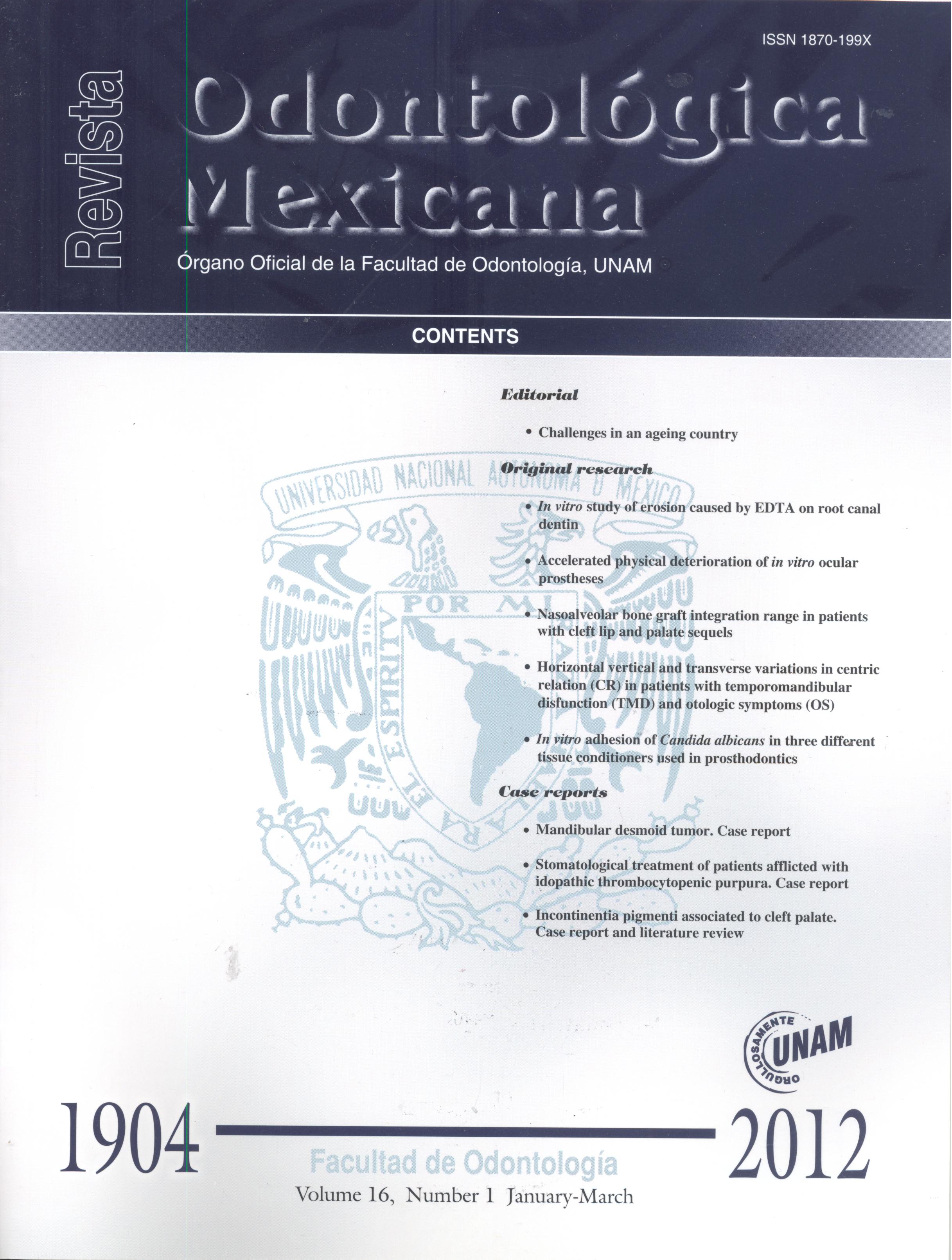In vitro study of erosion caused by EDTA on root canal dentin
Contenido principal del artículo
Resumen
In endodontic treatment, disinfection of the root canal system guarantees success. Use of chelating agents like etilendiaminotetraacetic acid (EDTA) is indispensable to achieve such a goal. Nevertheless, dentin experiences topographic structural changes which can lead to endodontic failure. This study was almost experimental. Forty large, straight canals were used for it. Use of instruments in the canals followed the balanced forces technique. Hand instruments were used in the crown and apex, using Flex-R
fi les in the first and second series, each instrument was irrigated with NaOCl. Final irrigation consisted of 3 mL 17% EDTA, followed by 5 mL 5.25% Na-OCl. Roots were longitudinally cut with diamond disc. Samples were prepared with a coating of gold in plasma, so as to be able to be examined with a Scanning Electron Microscope. The erosion extent of middle and apex third of the root canal were measured. When using 17% EDTA results were: in the middle third, 50% severe erosion and 25% moderate erosion, and in the apical third 30% severe erosion and 25.7% moderate erosion. The dentin alteration caused by EDTA must be considered when filling (obturating).
Detalles del artículo
Cómo citar
Liñan Fernández, M., González Pérez, G., Ortiz Villagómez, M., Ortiz Villagómez, G., Mondragón Báez, T. D., & Guerrero Lara, G. (2012). In vitro study of erosion caused by EDTA on root canal dentin. Revista Odontológica Mexicana Órgano Oficial De La Facultad De Odontología UNAM, 16(1). Recuperado a partir de https://revistas.unam.mx/index.php/rom/article/view/29582

Revista Odontológica Mexicana por Universidad Nacional Autónoma de México se distribuye bajo una Licencia Creative Commons Atribución-NoComercial-SinDerivar 4.0 Internacional.
Basada en una obra en http://revistas.unam.mx/index.php/rom.
